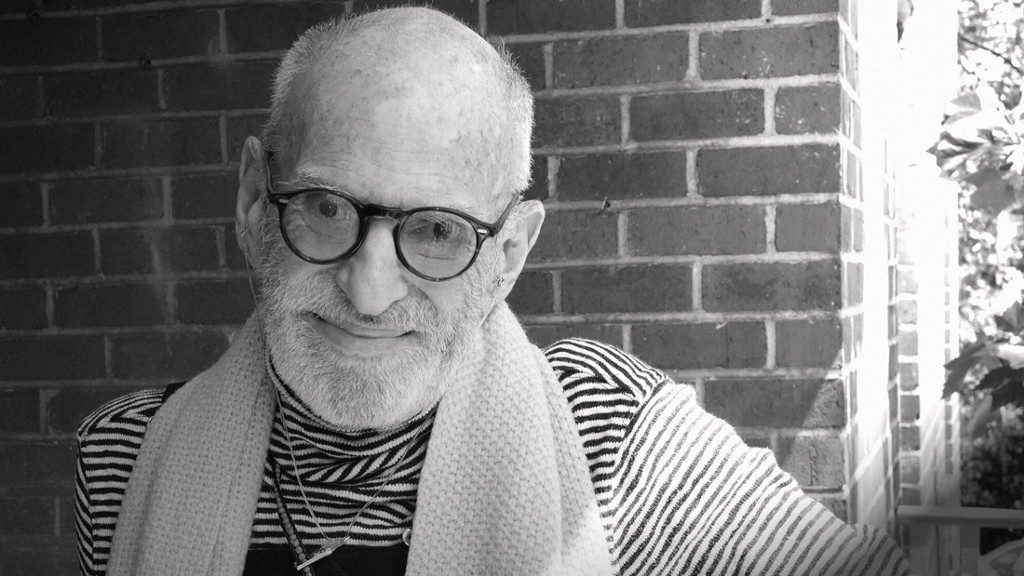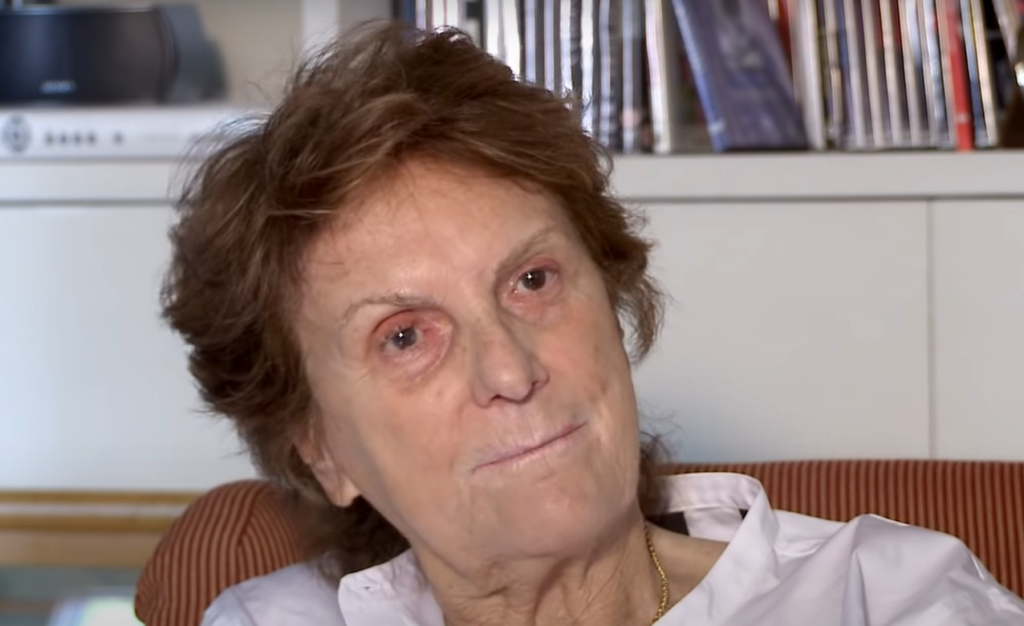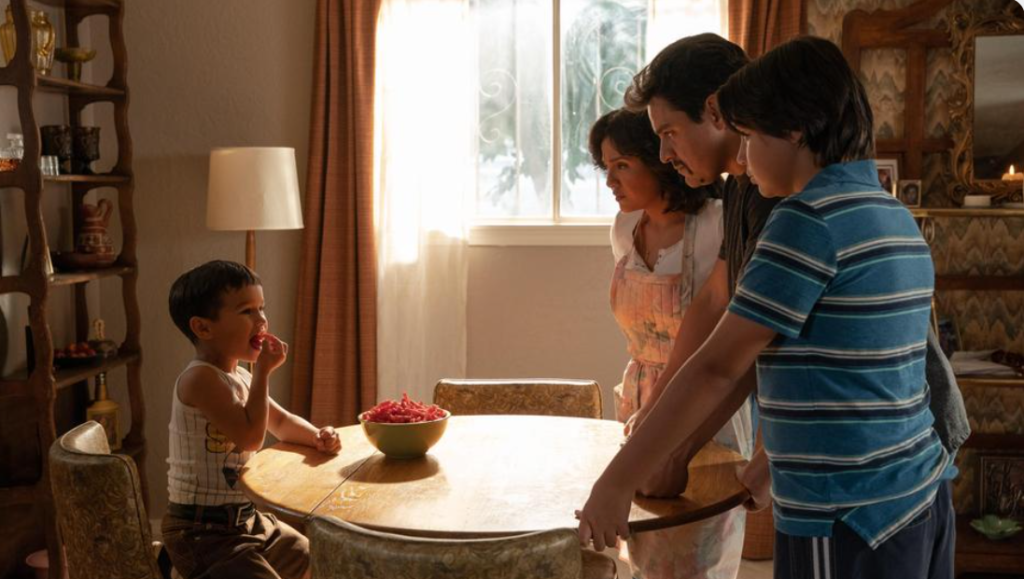Jean Carlomusto’s documentaries have been exhibited internationally in festivals, museums, and on television. She produced, directed, and edited Sex in an Epidemic, which premiered on Showtime. This powerful documentary tells the heroic story of how the safer sex movement was born and how HIV prevention movements continue today. She created Offerings, an interactive video altar that was featured in art exhibitions such as Make Art/Stop AIDS at the Fowler Museum at UCLA and NOT ALONE at the Durban Art Gallery in Durban, South Africa.
Her personal films are often unorthodox investigatIve reports on subjects that have been all but erased from history. She produced, directed, and edited To Catch a Glimpse, (Museum of Modern Art, NYC, permanent collections), in which she delves into her family history by trying to find out if the rumors about her grandmother’s death are true. In L is for the Way You Look, which aired on PBS/WNET, she pieced together lesbian history using whatever scraps of gossip and memory she could find into a humorous portrait of a population’s creative tussle for visibility and inclusion.
Carlomusto is a professor of Media Arts and Director of the Television Center at Long Island University — Post. (JeanCarlomusto.com)
Larry Kramer in Love and Anger will premiere at the 2015 Sundance Film Festival on January 23.
W&H: Please give us your description of the film playing.
JC: Larry Kramer In Love & Anger is an intimate look at the extraordinary life and work of playwright, author, and LGBT activist Larry Kramer. It is an in-depth, “warts and all” portrait of one of the most important and controversial figures in contemporary gay America, a political firebrand who gave voice to the outrage and grief that inspired a population to fight for their lives.
W&H: What drew you to this story?
JC: I first became interested in Larry Kramer back in 1986. I had started a cable TV show called Living With AIDS at the Gay Men’s Health Crisis in NYC to counteract the fear and hysteria that was rampant at that time. Although Larry co‑founded GMHC in 1981, by the mid-1980s he was an infamous outcast of the organization. I wanted to interview him for the show but was forbidden to do so in no uncertain terms because Larry had called the co-founder of GMHC a “murderer” in print. Of course, this made me want to know about Larry even more.
In 2010, I went to see Larry reading excerpts from his forthcoming book, The American People. I was captivated by Larry’s reading of his work. This got me thinking about the complexity of Larry. He’s a complex hero who was shaped by the context of the terrible plague years.
Over the years, Larry has repeatedly denied requests to make documentaries about his life. He refused me at first, too. He told me it all felt too final. I persisted and told him, “You taught me not to take no for an answer.” He relented and gave me a unique opportunity to make this film with his cooperation.
W&H: What was the biggest challenge in making the film?
JC: During the making of this documentary, Larry became gravely ill. I saw him struggle with health crises and come back from the edge of death several times. He was fighting for his life. He never gave up, and neither did his husband, David Webster. David not only allowed me to shoot with Larry in the hospital; he encouraged it. So as to minimize any disturbance to Larry and the hospital staff, I would visit him alone with my camera.
Sometimes Larry was so sick, shooting was difficult, or impossible. He needed my care instead. You get a glimpse of this in the first scene of the film, when I’m feeding him and putting another blanket on him. During these times I was to learn that, for all Larry’s fury, he is also a very shy and sweet man.
As I write this, he is doing well enough to return to writing his history of the AIDS plague.
W&H: What do you want people to think about when they are leaving the theatre?
JC: I want people to think about the possibilities they as individuals have to change the world. I want them to see the importance of standing up and fighting for what they believe in.
W&H: What advice do you have for other female directors?
JC: Make sure you are working with people who truly support your vision. Nurture an environment of trust and collaboration on the film. HBO was a nurturing and supportive environment. This played a big part in the film’s success.
W&H: What’s the biggest misconception about you and your work?
JC: That as an AIDS activist, I only make agitprop. Actually, my films are complex and unorthodox investigations into subjects often left to the periphery of our culture.
W&H: How did you get your film funded? Share some insights into how you got the film made.
JC: For the first three years of the project, Cresting Moon Productions (my production company) financed the project. Right around the time HBO picked up The Normal Heart, the doors opened for Larry Kramer In Love & Anger.
W&H: Name your favorite woman-directed film and why.
JC: It’s hard to name just one, but I’ll say that my favorite woman-directed film that I saw as I was making this documentary was Margarethe von Trotta’s Hannah Arendt. It was a brilliant portrait of another political firebrand who angered many of her colleagues with her writing and lectures Yet she had the courage and conviction to stand up for what she believed. Barbara Sukowa imbues Hannah Arendt with a steely passion that reminds me of Larry.
Watch a featurette of the film at the Sundance site.







